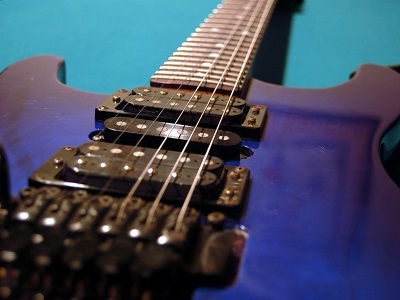Modifying the Guitar Bridge for Best Action
 The height of your strings plays an important role in your playing. String height can have an enormous impact not only on your speed but also on your accuracy as well. All guitarists, no matter what genre, would benefit from learning to adjust their strings to a proper height.
The height of your strings plays an important role in your playing. String height can have an enormous impact not only on your speed but also on your accuracy as well. All guitarists, no matter what genre, would benefit from learning to adjust their strings to a proper height.
In this article, we are going to teach you how to set up the guitar bridge action in a few easy steps.
It’s Important You Understand Why String Height Matters
If you don’t care about playing fast, that’s fine; proper string height doesn’t only benefit shredders. It benefits all guitarists. The higher your string height, the more tension your strings create, the harder it is to fret your strings. This means that you are putting an excess strain upon the delicate tendons of your wrist and hand and fingers.
Not only can this lead to injury, but it can also lead to aches. Higher strings offer more resistance, which means they push into your fingers harder. This means you are more likely to cut grooves into your fingers when sliding.
The amount of tension given off by a string relates to a string at the proper height. This means that the sixteen pounds of tension that your string calculator claimed is actually going to be quite a bit more due to the extra height.
Different Types of Bridges Work Differently
For hardtail bridges such as Tune-O-Matics and Floyd Rose locking tremolo systems, string height is adjusted by tightening or lowering the two posts. For the Tune-O-Matic, these posts are located on the bridge itself and will be flat head screw posts. For the Floyd Rose, the will be Allen wrench or hex wrench posts located towards the pickups at the end of the bridge.
For hipshot bridges or Fender styled bridges, each adjustment is made to each individual string.
All Action Is Measured at the Twelfth Fret
The most commonly used string height is 3/64”. This is the string height that most players will find themselves comfortable with, as it is low enough to make speed runs easy, and high enough to add proper tension to the lower strings.
For guitar shredders who have a light touch and want the fretting to be a bit softer, 2/64” is the best route. It will make your fretting much easier for light fingering and will allow you to achieve a more fluid feel.
Some guitarists may find 2/64” too low, as it is a very low string height, and for first timers, it can feel odd as it is very touch sensitive. This height is best used for clean players, as every movement will bring the possibility of a note.
If you like a bit of tension and don’t care about playing at light speed, 4/64” is the way to go. This tension is great for rhythm guitarists, as it gives enough tension to allow extra attack on the strings without them feeling flimsy.
When setting up the guitar bridge action, use the quarter turn and measure method, which means measuring at the twelfth fret every quarter turn.
Take your time, and see which fits best. You may prefer different heights for different tunings.
Learn to Setup Your Own Guitar Anytime, Anywhere
Learn And Master Guitar Setup & Maintenance is a comprehensive step-by-step video course that shows you how to setup your guitar at home using simple tools.
You will be able to save time and money by learning to make your own adjustments for maximum playability and better tone.







Leave A Comment